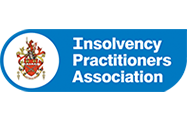Real Business Rescue published their widely anticipated Business Distress Index for Q2 2021 last week. Despite a slight rise in insolvencies, the statistics are incredibly encouraging for the future of business post-pandemic. The Business Distress Index paints a brighter future for SMEs and we take a look at the stats in more detail and discuss how this will impact commercial debt recovery.
What do the stats say?
The figures, which cover April – June 2021, show that many businesses have had a successful quarter, partly attributable to the easing of the nationwide lockdown in April. In total, over 640,000 SMEs are classified as in distress, a decrease of almost 10% on the previous quarter. Almost 70,000 SMEs moved away from being in distress this quarter, marking the first decrease since the start of the pandemic.
The number of SME jobs that are at risk has dropped from 3.2m in Q1 2021 to 3m in Q2, as the economy has stabilised and businesses have been able to reopen. Certain sectors have seen a more positive few months than others, manufacturing saw almost a 10% decrease in jobs that are in danger.
What about corporate insolvencies?
Despite a fairly positive outlook on the previous quarter, insolvencies did begin to rise. There was a 31% increase on Q1 2021, equating to just over 3,100 businesses closing their doors. The figure represents the highest corporate insolvency figures since the pandemic began. It demonstrates that as government loans are starting to be repaid, and the furlough scheme has been shifted towards more reliance on business’s to pay the wages, it is proving difficult for some businesses.
What does this mean for commercial debt recovery?
Another impacting factor on the rising number of insolvent businesses is the amount of debt and liabilities that accrued for closed businesses during the pandemic. Rent, HMRC tax and VAT bills, plus invoices from suppliers etc. Couple that with bounce back loan repayments due and many businesses are in a tight spot.
There has been a restriction imposed by the government on winding up petitions so, debt recovery has stalled in some instances where enforcement would be necessary. But, with the ban due to be lifted soon, it is vital that creditors shift their debt to the front of the queue and make some headway with trying to make collections.
Once a business enters a formal insolvency process, the debt is out of your hands so using an expert to ensure that the pressure is still on before this becomes an issue can really help your case when it comes to a payout to creditors. We’re seeing many creditors take a more understanding approach with their debtors and accepting reasonable offers, which would have been disregarded straight away before the pandemic. After all, would you rather have 80% of something or 0% of nothing?
What does the future hold for SMEs?
Q3 and Q4 2021 will potentially be painting very different pictures when the Business Distress Indexes are posted later this year and early next year. With the furlough scheme ending, winding up petitions back on the cards and an uncertain outlook on the level of COVID-19 cases, who knows what the future holds for SMEs.
It is clear that the second half of the year is going to be a challenging time for businesses. Those who are seeing debts pile up from their customers and clients must act now. We can help you to recover a wide spectrum of business debts, on a no collection, no fee basis. You will also have access to our Escalate no cost litigation service if it is required. We are here to help. Reach out to our expert team today: contact us.





